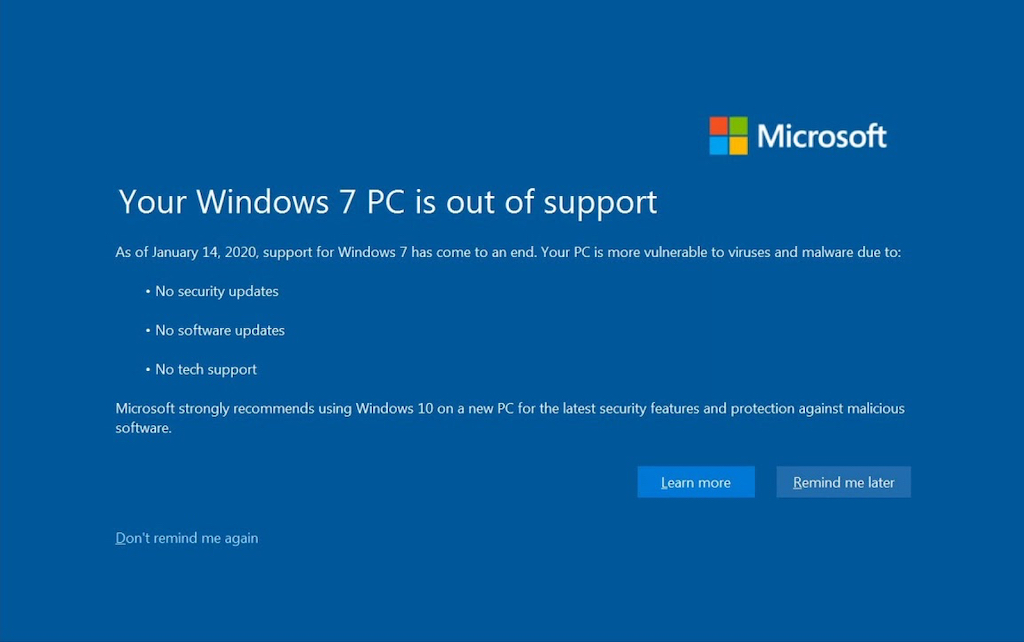
Happy New Year! I’m writing this post on December 31, 2019, but I’m willing to bet it will be early 2020 by the time you see it. Microsoft has a New Year greeting for you as well—at least if you’re one of the hold outs with a computer that’s still running Windows 7. January 14 is the day that support finally ends for Windows 7. If you weren’t aware of that (you can read our extensive coverage of the issue here), then you’re going to start getting an eyeful in a matter of days. Microsoft says it will start displaying a full-screen warning on Windows 7 PCs, starting January 15.
You won’t be able to ignore the warnings
Up until now, Microsoft has been relatively discrete about notifying users that Windows 7 support is on the verge of ending. It’s sent out a few reminders over the past year. However, on January 15 (the day after support is officially cut off), the company will be getting more aggressive about the messaging. According to Microsoft, anyone still running Windows 7 can expect to begin seeing full-screen warnings that outline the risks of continuing to run the outdated operating system.
This full-screen warning is going to be a lot more difficult to ignore.
You won’t want to ignore the warnings
Here’s the thing. Microsoft isn’t just nagging you because it wants to sell another copy of Windows 10.
Windows 7 was launched in 2009. The last major release was in 2011, and mainstream support ended in 2015. There have been multiple new OS versions released since then. Windows 10 itself will be five years old in 2020. It’s time to move on…
If you continue to run Windows 7, your PC will receive no new functionality updates. That’s nothing new, since the releases were limited to security patches years ago. However, on January 14, those security patches will also cease. That means as soon as someone releases a virus or exploit that targets Windows 7 PCs, it will be open season. Unless you “unplug” it from the internet, the only thing protecting your computer will be any third party virus protection software you happen to be running. You may be okay, at least for a bit, but the odds will increase every day that malicious code will target your computer and the data stored on it.
So don’t ignore the warning.
Your next steps
With the big deadline looming, what are your next steps? Well, one way or another you need to do something about Windows 7. Running an out of date operating system is never a great idea, especially if the computer is connected to the internet. The recommended solution is to upgrade to Windows 10. That’s not always practical—especially with a computer that’s old enough to be running an operating system first released a decade ago—in which case you might want to start looking at new PCs. Best Buy has you covered there, with all the latest and greatest new computers. When the dust settles, despite having to spend some money, the performance, design, and new capabilities of current PCs and Windows 10 is likely to leave you happy that you were prodded into making the jump.



